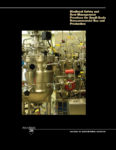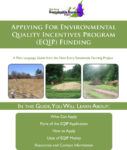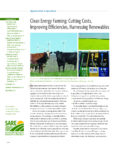Showing 11-20 of 20 results
Storage Methods for Ethanol Co-Products
This University of Nebraska video series contains information on the storage and utilization of three unique co-product feeds from the ethanol industry.

Energy Independence: On-Farm Biodiesel Fuel Production
Roger Rainville is ahead of the curve when it comes to reducing costs on his farm near Alburgh, Vt. He’s currently producing biodiesel from canola and sunflower for about $1.70 a gallon.
Greenhouse Energy Conservation Strategies and Alternative Fuels
Includes curriculum materials, extension bulletins, resource lists, and a greenhouse energy model that were developed with the intention that educators can use the materials in full or part to deliver programming on energy management and conservation for greenhouse production.

Thermal Banking Greenhouses
Steven Schwen uses thermal banking to significantly reduce the energy costs of running a greenhouse for cold-season production.

Thermal Banking for Cold Storage
Steven Schwen's innovative energy conservation strategy uses thermal banking technology to conserve heat in his greenhouse and for cold storage.

Small-Scale Biogas Technology
This website has information on technology for turning organic waste into biogas for small-scale, on-farm energy applications.

Biodiesel Safety and Best Management Practices for Small-Scale Noncommercial Use and Production
This publication reviews some of the accepted practices associated with small-scale biodiesel production to make it a safe, environmentally sound practice that generates a quality product.

Applying for Environmental Quality Incentives Program (EQIP)
This plain language guide introduces readers to the USDA-NRCS Environmental Quality Incentives Program (EQIP), and explains eligibility for EQIP, how to apply and how the money can be used.

Clean Energy Farming
Clean Energy Farming: Cutting Costs, Improving Efficiencies, Harnessing Renewables features innovative SARE-funded research and examples of farmers who are improving energy efficiency while saving money, implementing farming practices that both save energy and protect natural resources, and producing and using renewable fuels.
GIS Applications in Agriculture: Nutrient Management for Improved Energy Efficiency Volume II
Provides an outline of how management recommendations are developed and how a ground-based active sensor can be used. It contains 24 case studies (exercises) ranging from using historical techniques to overcome production barrier to calculating soil organic carbon maintenance requirements. A CD containing data sets is included with the book.